How to optimize multiple SEO keywords with Google Keyword Planner
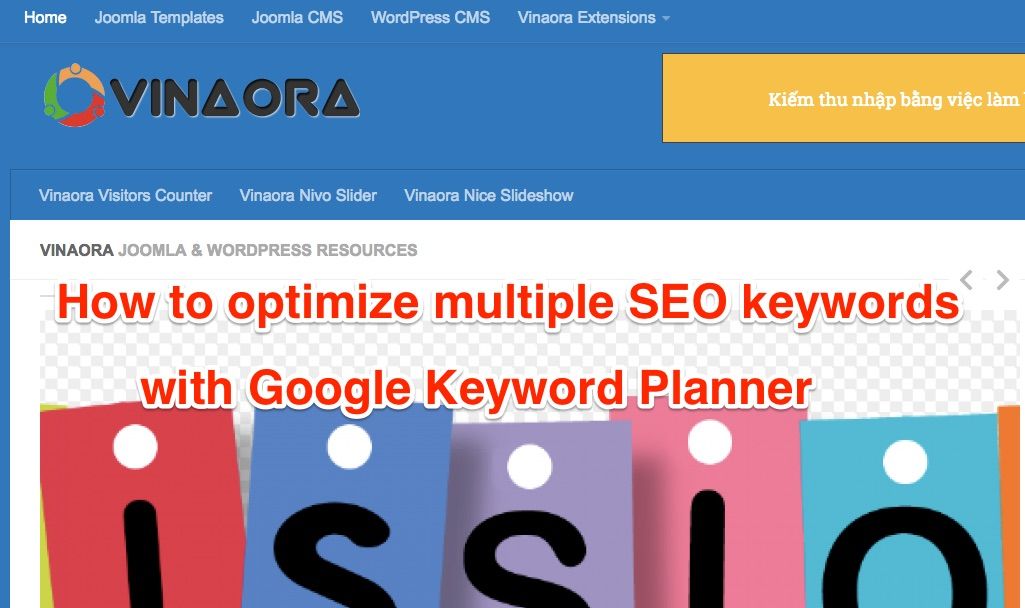
If you have hundreds of targeted keywords, optimizing each article for a keyword will not make much sense. This is not only costly and time-consuming, but it can also put you at risk of being punished by Google through the Google Panda algorithm. In this article, you will know when to target multiple keywords per page and how to solve this difficult optimization process.
Within this article, I will show you how to determine whether you should target more than one keyword on a page and how to optimize your pages around many of them.
Gather keywords that need to be optimized
The first step is to sign in to Google AdWords, click on the analytics tool, and then click on the keyword plan. Then, click on “search for keyword ideas” and “ ad group” if you are considering optimizing single pages around multiple keywords and you need to place a very specific keyword in this box. You should not put words like “social media” or “SEO” or maybe something like “twitter marketing” because they are too large to search for and they will produce many low-interaction results but not too relevant to the primary keyword.
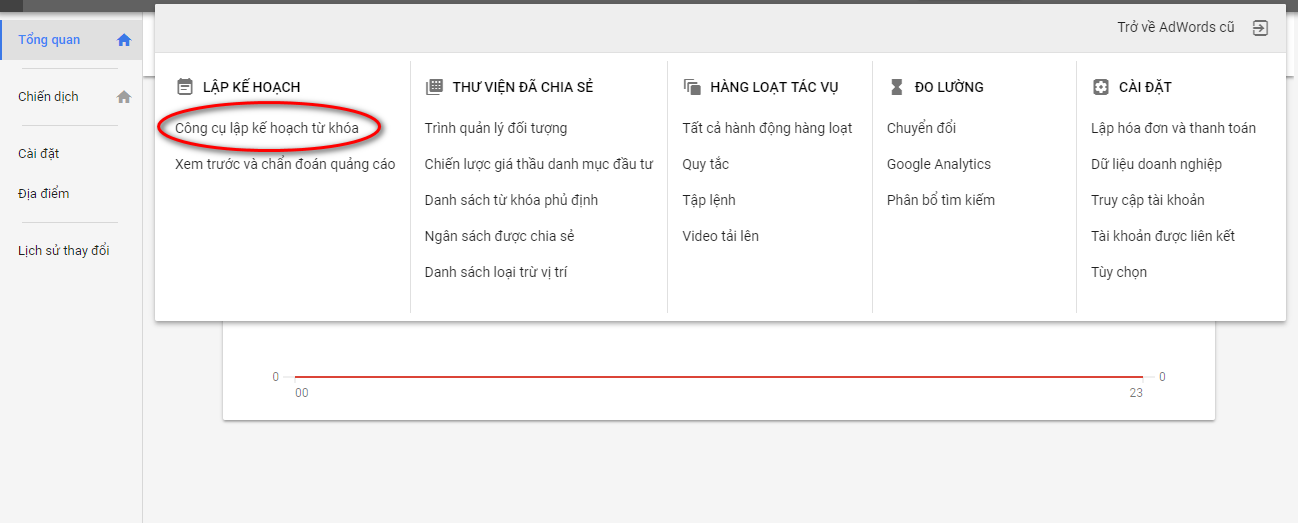
So you should put something like “Xe Mercedes” because it is very specific, it is about the Mercedes car theme that you care about and then you click on “get the idea”. Then click on the keyword ideas tab. What you need to do at this time is to see if there are any other low search volume, you also need to consider the keywords that are closely related to the primary keyword that have the same search intent. This means that these keywords are what users think of when searching for the keyword “Xe Mercedes“.
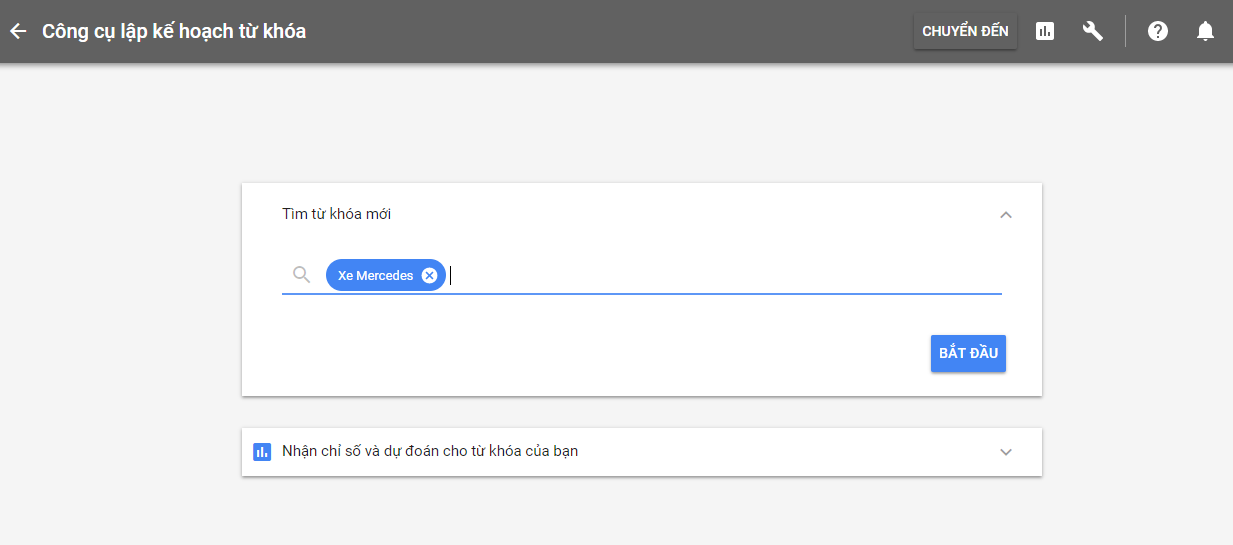
Many people want to know about the types of Mercedes cars, price, how to buy it. So they will click on the relevant keywords. Here are some related keywords with low clicks like “Giá xe Mercedes” or “Bán xe Mercedes“. Look for this group of words because they have the same search intent and have a low click volume.
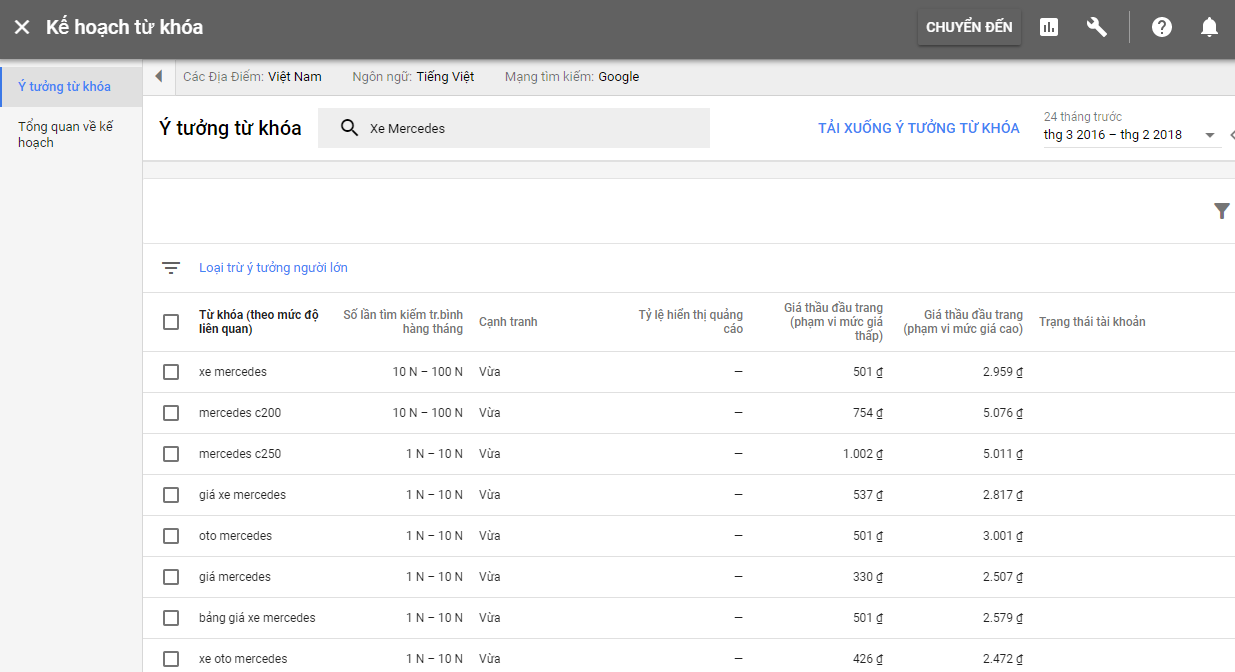
What you need to do is open a small notepad file like this and add any keywords you find in addition to primary keywords that have a low search volume and have similar search intent.
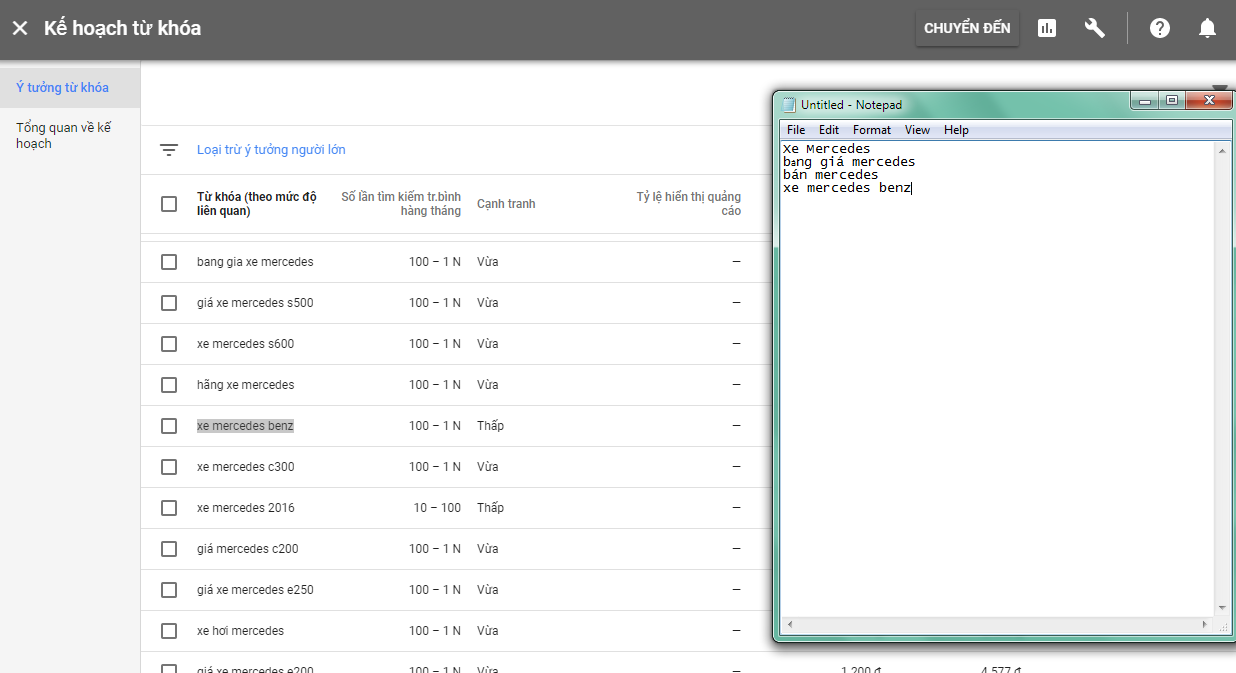
For example, the keyword “Mercedes Benz” has the same search intent as “Mercedes”, just a slightly different expression. Next, copy that keyword and paste it into a notepad file, then scroll down and see if there are any other keywords with low search volume and similar search intent.
Next, you go to your WordPress dashboard and start optimizing your pages around keywords that you find. So hover over the post then click “add new” and then open the notepad file, copy the keywords you find and paste them into your WordPress page.
Optimize multiple keywords on the same page
The next step is to combine all of the keywords in your title tag without any optimization. The mistake that many people make when they target multiple keywords on each page is that they do something like this: “Mercedes | Mercedes Prices … “and you may have seen this before.
This error is quite common and it obviously is not optimized because it includes both primary keywords and different variations of keywords in the same title tag. It is not only bad for SEO but if this page is displayed in Google results then it makes this title tag have very low click rate, extremely low.

What you need to do is to create relevant title includes all these keywords. As you can see, this title “The latest genuine 2018 Mercedes quotation” is a more attractive title. So, if you see this in Google results and you are interested in the price of a Mercedes, then you will be ready to click on this article.
You need to write a description for that primary keyword. Please scroll down to your meta description if you are using Yoast Seo plugin and write something attractive that also includes all of your keywords. Think about whether you want to put something here, for example, wonder about the latest Mercedes quotation.

This is a great description tag, because if someone is searching for any keyword you target, then when they see this meta description tag, they will click on and go to your page. This is also very SEO friendly as it includes all the keywords that you are targeting.
Optimize article content with multiple keywords
Next, you want to optimize your content around your target keywords. To move back, mark all of your target keywords, click on the paragraph and then set them as Heading 2. This is important because Google is more focused on content in a Heading 2 tag compared to the content as in just one paragraph tag.
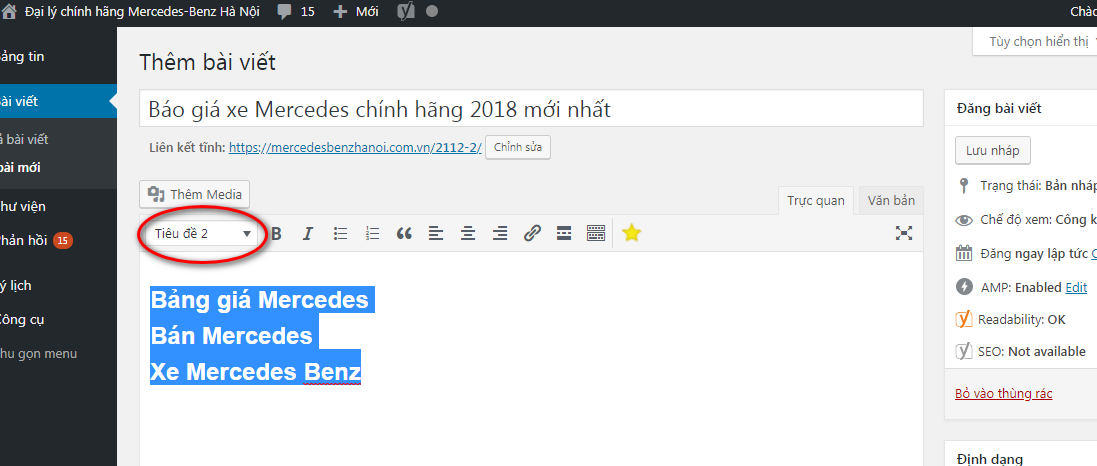
These will form subgroups of your article. You just put them in the subheading somewhere. Ask questions about Mercedes Benz cars why it matters, then write content about why it matters.
Then you pay attention to the “Mercedes price list” that you already know how to take advantage. Now, this strategy also gives you a practical benefit, because it helps you plan your content better. You already have subheadings here, now the problem is just filling the content for all of your subheadings and obviously when you write, naturally you will add those keywords to the post, for example: “Mercedes price list”.
In this section, you will need to add something for this keyword, for example, “the latest genuine Mercedes price list”. In this section, just add the keyword “Mercedes price list” once if you do not need to optimize it. And if you want to put it on top of your page in all four of these keywords, add more but pay close attention to the primary keyword “Mercedes”.
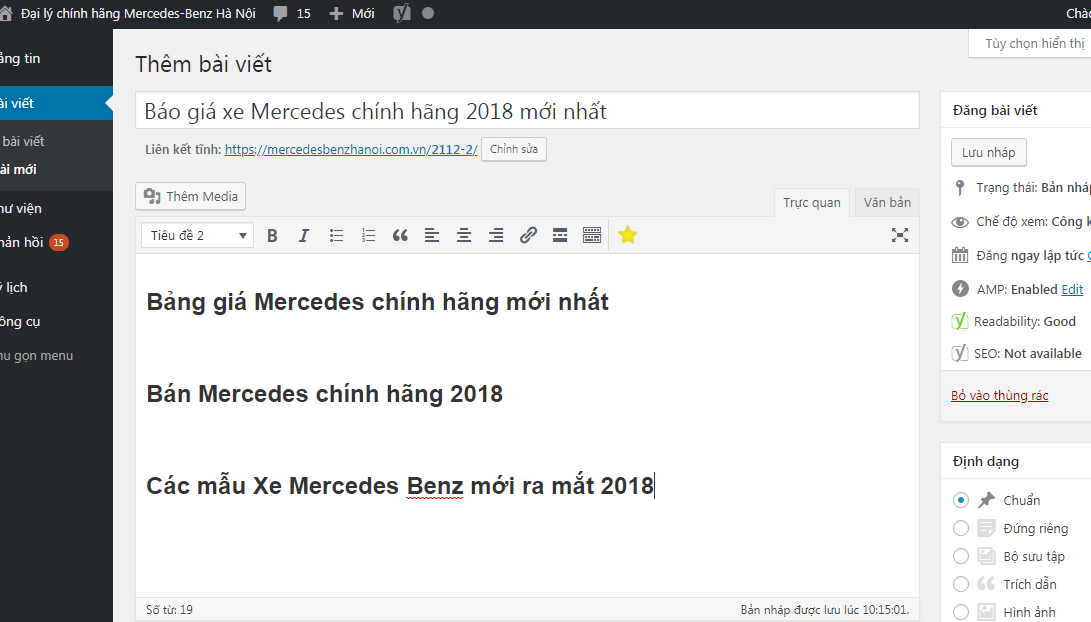
After finding and picking up the primary keywords and related keywords to write SEO standards article, we need to add the full content in the heading that you have set up as the H2 tags above.
This is all you need to know to target multiple keywords on a page, as long as you find keywords that have similar search intent and you can perform page optimization by using the instruction above.

